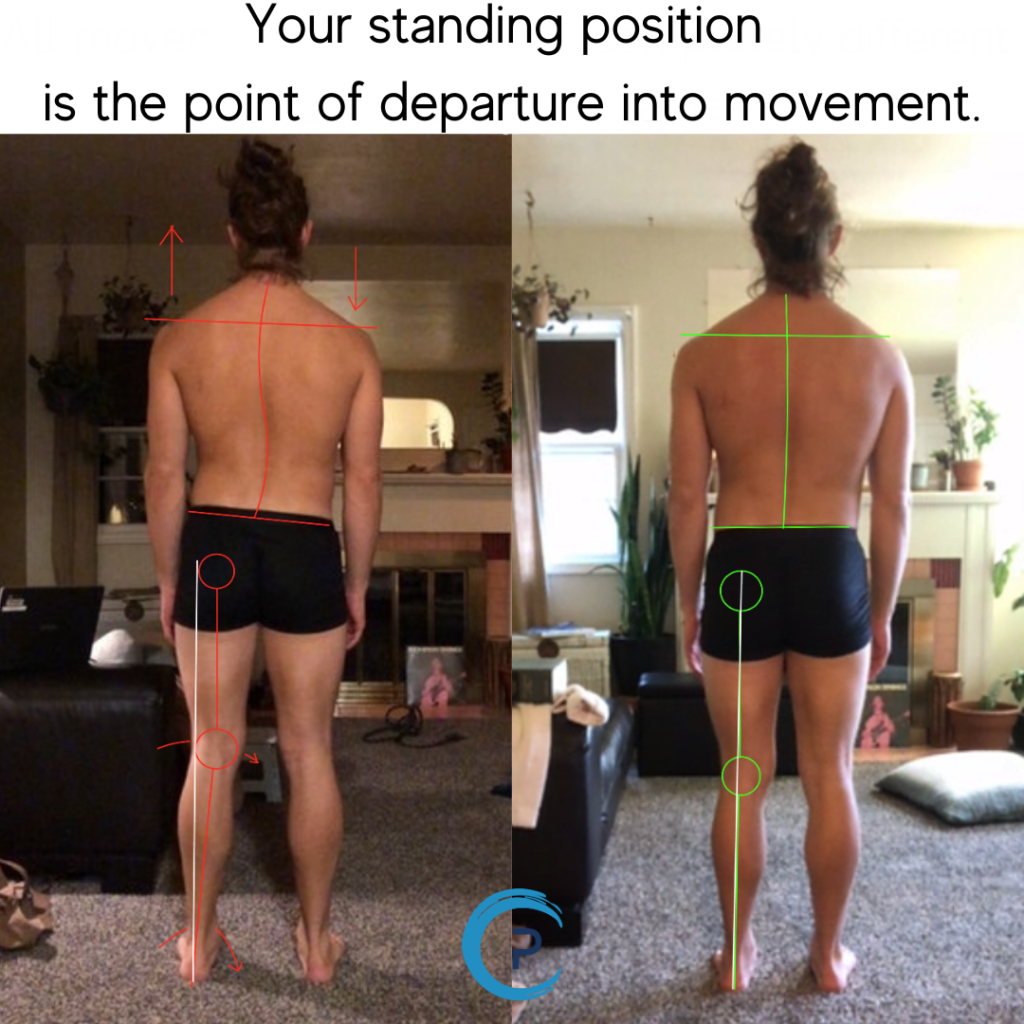
In 2008 a prospective study of standing posture with 766 participants was conducted in an attempt to identify and categorize if standing position is associated with spinal pain. The conclusion of the study was that meaningful classification exists and can be determined successfully from photographs. More neutral postures are associated with less pain.[1]
Postural faults that exist and persist give rise to discomfort, pain, and/or disability. The range of effects from discomfort to incapacitating is ofter related to the severity of the faults.[2]
If the body is misaligned at rest, it will move through space with those same misalignments ensuring that compensation and dysfunction will occur.[3]
In the photo on the left, every load bearing joint (ankles, knees, hips, and shoulders) on his left side are in a different position than those on his right side.
If this is the body at rest – it will be the body through motion because it’s the body he’s bringing into motion.
The left pelvis elevating, right shoulder depressing, trunk offsetting to the right, right shoulder internally rotating, left foot pronating, left leg abducting, right hip tightening, lumbar spine shifting – all of it because that’s how the motion was entered.
The photo on the right shows his posture after using our rebalancing movement sequences. His load joints are more level and balanced, which means he’s departing into movement with more optimal function. When the joints leveled, the muscles around his spine relaxed and the lateral curves settled as his weight began to evenly distribute throughout his body easing symptoms from a herniated disc.
[1] Smith A, O’Sullivan P, Straker L. Classification of sagittal thoraco-lumbo-pelvic alignment in standing and its relationship to low back pain. Spine (Phila Pa 1976). 2008 Sep 1;33(19):2101-7.
[2] Marcus M, Gerr F, Monteilh C, et al. Postural risk factors for musculoskeletal symptoms and disorders. Am J Ind Med 2002; 41:236-249.
[3] Kendall, F. P., McCreary, E. K., Provance, P. G., Rodgers, M. M., & Romani, W. A. (2005). Muscles: Testing and Function with Posture and Pain (Fifth, North American ed.).